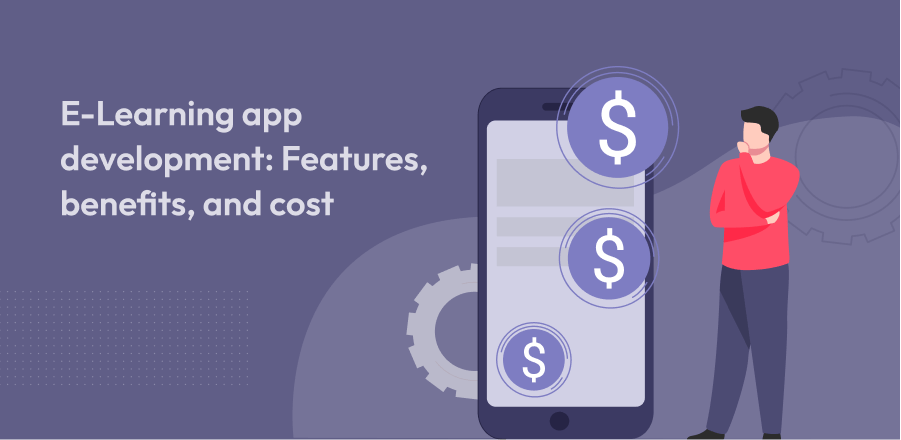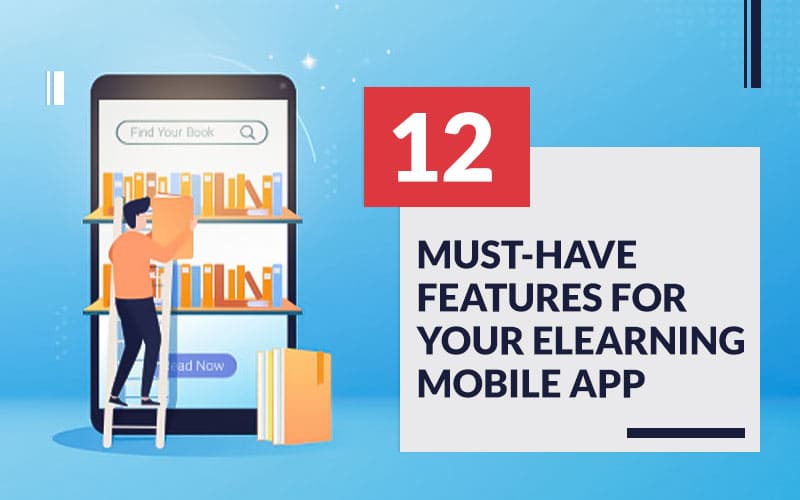Must-Have E-learning App Features
Introduction
- Introduction to E-learning Apps
- Importance and Growth of E-learning
Technical Specifications
- Platform Compatibility
- User Interface and Experience
- Performance and Speed
Core Features
- User Authentication and Profile Management
- Course Management System
- Content Delivery and Management
- Assessment and Evaluation Tools
Additional Features
- Gamification
- Collaboration Tools
- Analytics and Reporting
Security and Privacy
- Data Protection
- User Privacy Policies
- Secure Payment Systems
User Guides and Tutorials
- Onboarding Process
- User Manuals and Guides
- Help and Support
Applications in Different Industries
- Education
- Corporate Training
- Skill Development
Benefits
- Accessibility and Flexibility
- Cost-Effectiveness
- Personalized Learning
Challenges and Limitations
- Technical Issues
- User Engagement
- Content Quality
Latest Innovations
- AI and Machine Learning
- Virtual and Augmented Reality
- Blockchain Technology
Future Prospects
- Predictions for E-learning
- Emerging Trends
Comparative Analysis
- Comparison with Traditional Learning
- Comparison with Other E-learning Platforms
Conclusion
- Summary of Key Points
- Future of E-learning
---
Must-Have E-learning App Features
Introduction to E-learning Apps
E-learning apps have revolutionized the way we access education and training. These digital platforms provide a flexible, interactive, and often cost-effective alternative to traditional classroom learning. With the advancement of technology, e-learning apps have become increasingly sophisticated, offering a wide range of features designed to enhance the learning experience.

Importance and Growth of E-learning
The e-learning market has experienced exponential growth over the past decade. This surge is driven by several factors, including the increasing accessibility of the internet, the proliferation of smartphones, and the demand for flexible learning solutions. E-learning has become particularly important in the context of the COVID-19 pandemic, which necessitated a shift towards remote learning.
Platform Compatibility
An essential feature of any e-learning app is its compatibility with various platforms. Whether users are accessing the app via a desktop computer, tablet, or smartphone, the app should provide a seamless experience. This includes compatibility with different operating systems such as iOS, Android, and Windows.
User Interface and Experience
A user-friendly interface is crucial for the success of an e-learning app. The design should be intuitive, allowing users to navigate through the app effortlessly. Features like easy course access, clear progress indicators, and simple navigation menus contribute to a positive user experience.
Performance and Speed
The performance of an e-learning app is vital. Slow loading times and technical glitches can frustrate users and disrupt the learning process. Therefore, the app should be optimized for speed and reliability, ensuring that users can access content quickly and without interruptions.
User Authentication and Profile Management
Robust user authentication and profile management features are fundamental to an e-learning app. Users should be able to create and manage their profiles securely. This includes options for registering with email, social media accounts, and two-factor authentication for enhanced security.
Course Management System
A comprehensive course management system is at the heart of any e-learning app. This feature allows educators to create, manage, and organize courses efficiently. It should support various content types, including video lectures, PDFs, quizzes, and assignments.
Content Delivery and Management
Effective content delivery and management are crucial for keeping users engaged. The app should support multiple content formats and provide features like content scheduling, bookmarking, and offline access. Additionally, a robust content management system allows educators to update and manage course materials effortlessly.
Assessment and Evaluation Tools
Assessment and evaluation tools are essential for tracking learners' progress. These tools should include features like quizzes, assignments, peer reviews, and automated grading systems. Detailed feedback mechanisms help learners understand their strengths and areas for improvement.
Gamification
Gamification is a powerful feature that can increase user engagement. By incorporating elements like badges, leaderboards, and rewards, e-learning apps can motivate learners to complete courses and participate actively. Gamification makes learning fun and competitive, enhancing the overall experience.
Collaboration Tools
Collaboration tools facilitate interaction among learners and between learners and educators. Features like discussion forums, chat functions, group projects, and live webinars foster a sense of community and enable collaborative learning.
Analytics and Reporting
Analytics and reporting features provide valuable insights into learners' progress and course effectiveness. Educators can track metrics such as course completion rates, quiz scores, and engagement levels. These insights help in improving course content and tailoring learning experiences to individual needs.
Data Protection
Data protection is a critical aspect of any e-learning app. The app should comply with data protection regulations such as GDPR and CCPA. Features like data encryption, secure login, and regular security audits ensure that users' data is safe from breaches and unauthorized access.
User Privacy Policies
Transparent user privacy policies build trust between the app and its users. These policies should clearly outline how users' data is collected, stored, and used. Providing users with control over their data, such as options to delete their accounts and data, is also important.
Secure Payment Systems
For apps offering paid courses, secure payment systems are essential. The app should support various payment methods, including credit cards, digital wallets, and bank transfers. Integration with trusted payment gateways ensures that transactions are secure and user data is protected.
Onboarding Process
A smooth onboarding process helps users get started with the app quickly. This includes tutorials, guided tours, and welcome messages that familiarize users with the app's features and functionalities. An effective onboarding process enhances user retention and satisfaction.
User Manuals and Guides
Comprehensive user manuals and guides provide users with detailed instructions on how to use the app. These resources should cover all features and functionalities, providing step-by-step instructions and troubleshooting tips.
Help and Support
Responsive help and support are crucial for addressing users' issues and queries. Features like live chat support, email support, and a detailed FAQ section ensure that users can get assistance when needed, enhancing their overall experience with the app.
Applications in Different Industries
E-learning apps are used across various industries, including education, corporate training, and skill development. Each industry leverages e-learning to meet its specific needs, from enhancing student learning outcomes to upskilling employees and professionals.
Accessibility and Flexibility
One of the most significant benefits of e-learning apps is their accessibility and flexibility. Users can access courses anytime, anywhere, and on any device, making learning more convenient and adaptable to their schedules.
Cost-Effectiveness
E-learning apps offer a cost-effective alternative to traditional learning methods. They eliminate the need for physical classrooms, printed materials, and travel expenses, making education more affordable and accessible to a broader audience.
Personalized Learning
Personalized learning features cater to individual learning styles and paces. Adaptive learning technologies, personalized course recommendations, and custom learning paths enhance the learning experience by tailoring content to meet individual needs.
Technical Issues
Despite their benefits, e-learning apps can face technical issues such as server downtime, software bugs, and compatibility problems. These issues can disrupt the learning process and frustrate users, highlighting the need for robust technical support and regular updates.
User Engagement
Maintaining user engagement is a challenge for e-learning apps. Features like interactive content, gamification, and social learning can help keep users engaged and motivated to continue their learning journey.
Content Quality
The quality of content is crucial for the success of an e-learning app. Poor-quality content can lead to low user satisfaction and engagement. Therefore, it's essential to ensure that the content is accurate, well-structured, and engaging.
AI and Machine Learning
AI and machine learning technologies are transforming e-learning apps. These technologies enable features like personalized learning, predictive analytics, and intelligent tutoring systems, enhancing the overall learning experience.

Virtual and Augmented Reality
Virtual and augmented reality technologies offer immersive learning experiences. These technologies can simulate real-world scenarios, providing hands-on learning opportunities that are engaging and effective.
Blockchain Technology
Blockchain technology enhances the security and transparency of e-learning apps. It can be used for secure credential verification, transparent content management, and decentralized learning platforms, providing a more trustworthy learning environment.
Predictions for E-learning
The future of e-learning looks promising, with continued advancements in technology and increasing demand for flexible learning solutions. Innovations like AI, VR, and blockchain will drive the evolution of e-learning, making it more interactive, personalized, and secure.
Emerging Trends
Emerging trends in e-learning include microlearning, mobile learning, and social learning. These trends cater to the evolving needs of learners, offering more flexible, bite-sized, and collaborative learning experiences.
Comparison with Traditional Learning
E-learning offers several advantages over traditional learning, including flexibility, accessibility, and cost-effectiveness. However, it also has its limitations, such as the lack of face-to-face interaction and the need for self-discipline.
Comparison with Other E-learning Platforms
Comparing different e-learning platforms helps users choose the one that best meets their needs. Factors to consider include the range of features, user experience, content quality, and pricing.
Summary of Key Points
E-learning apps have revolutionized education by offering flexible, accessible, and cost-effective learning solutions. Essential features include user authentication, course management, content delivery, and assessment tools. Innovations like AI, VR, and blockchain are set to further enhance the e-learning experience.
Future of E-learning
The future of e-learning is bright, with continuous technological advancements and growing
demand for flexible learning options. E-learning apps will continue to evolve, offering more personalized, immersive, and secure learning experiences.





